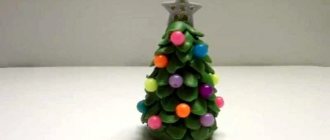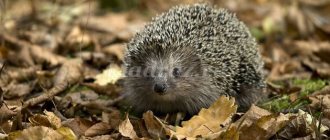Middle group. Junior preschool age. Children 4 - 5 years old
Summary of an open lesson in the middle group on modeling “Road, car, traffic light”
Summary of an open lesson in the middle group on artistic and aesthetic development ( modeling )
"Road, car, traffic light." Goal: Educational objectives: • To consolidate children's knowledge about the operation of traffic lights, about the rules for crossing streets; • Teach children to create an image of a pedestrian crossing and...
Abstract of educational activities on modeling in the secondary group “Bread” CONSPECT of organized educational activities on artistic and aesthetic development ( modeling )
on the topic:
“Treats for dolls”
in the middle group Prepared and conducted by: Anna Sergeevna Usmanova, teacher of the first qualification category Purpose: To develop the ability to sculpt from ...
Modeling. All materials on sculpting - Summary of GCD on sculpting in the middle group “Different fish”
Publication “Summary of GCD for modeling in the middle group “Different...” Lesson topic: “Different fish.” Program content: - give children an idea of the structure of fish; - learn to convey the distinctive features of different fish that have the same shape, but slightly different from each other in proportions. - continue to develop previously learned...
Summary of an integrated lesson on cognitive development and modeling for the middle group “Helping a squirrel” Municipal state preschool educational institution “Volchikhinsky kindergarten No. 2” Project of a practical event within the framework of the week of pedagogical skills (for children 4-5 years old) educational area familiarization with the natural world, artistic and aesthetic development...
Modeling using the plasticine technique “Herringbone” with children 5 years old
Goal: to continue to strengthen children’s ability to work in the plasticineography technique, to combine drawing needles using stacks. Winter has come and children are looking forward to the fabulous, cheerful New Year holiday. What would a New Year's holiday be without a beautiful Christmas tree? The guys are happy...
Summary of a lesson on modeling using natural materials in the middle group “Christmas tree from a cone”
Summary of a lesson on modeling using natural materials in the middle group “Christmas tree from a pine cone” Purpose: Using natural material to develop creative abilities, lift the New Year’s mood, make a symbol of the New Year - a Christmas tree. Objectives: 1. Create interest in…
Types and methods of modeling in kindergarten
“Types, methods and techniques of modeling in kindergarten”
(Methods and techniques for sculpting animals)
Modeling in kindergarten is a type of visual activity during which children depict objects of the reality around them, create a plastic image from soft materials (clay, plasticine, etc.)
Modeling:
- Develops children's powers of observation and sense of touch
- Develops more complete figurative representations
- Strengthens visual memory and small arm muscles
- Develops imagination and creativity
- Meets the age characteristics of children, satisfying their need for activity
The modeling technique is a list of those manual actions that children gradually master
Junior preschool age
- Rolling out
- Rolling up
- Finger pressing
- Topping
- Flattening
- Pulling back
- Accession
Middle preschool age
added:
- Smearing
- Pinching
- Pull
- Smoothing
Senior preschool age
- Improving sculpting techniques
- Familiar sculpting techniques are used
The subjects of modeling are very diverse. Children sculpt almost all the objects around them. Often, when modeling for children, there is one goal - to create an object with which they can play.
Children love to sculpt animals, but they will do it better if adults help them.
Animal sculpting can begin after children have mastered the image of basic shapes (ball, cylinder) and the technique of creating them.
2nd junior group
Children learn to divide a piece of clay into 2-3 unequal parts and assemble an object from individual parts in a constructive way. Gradually, finger work is included in the sculpting process.
Middle group
Children depict animals whose body shape is an ovoid (an egg-shaped figure; the term ovoid is not given to children), cones, cylinders, balls. They get acquainted with the solution of some technical problems: vertical installation of the figure, fastening parts, weighting the lower part of the figure, approximate measurement of proportions and parts, of which there are more (up to 5-6). You can introduce children to the image of a running animal. Pay attention to the image of characteristic features.
Senior group
More attention is paid to the image of the form and its clarification. Children are taught to convey texture (animal fur, bird feathers) using voluminous (high) or deep relief. They use the method of sculpting from a whole piece, which makes it possible to give the figure greater dynamism.
Preparatory group for school
Children use various means of expression, visual and technical techniques to create an image. They convey an image of a characteristic shape, proportions, details, an image of movement, and plasticity of form.
The main material for sculpting animals is clay. Clay is a natural material that is easy to prepare, has neutral and easy-to-work colors, and gives the child the opportunity to understand the integrity of the shape of objects.
When sculpting animals from clay, frames (sticks of different lengths and thicknesses) are used to ensure stability and dynamism of the figure.
When sculpting animals, you can use plasticine and salt dough.
Dough is a material accessible to everyone, cheap and easy to master.
Plasticine is an elastic material that requires special preparation before work.
The technique of sculpting animals is rich and varied, but at the same time accessible even to small children.
There are no strict rules in sculpting. The classification of methods is quite arbitrary; transitions from one method to another and the addition of one or more others to the main method when making one craft are possible. Imagination is important, and the method is just a means to realize the plan.
The initial shape of the figure is one, but the animals turn out to be very different. The main thing is to be able to sculpt characteristic details.
Constructive method An object is created from separate parts. Work begins with the main, largest part. When sculpting an animal (horse figurine), first sculpt the body, then the legs (compare them by size and correspondence to the size of the body), head, tail, etc. To sculpt paired parts, you need to prepare identical pieces of clay. Connect all the blanks to the base of the figure sequentially (coat them), then work on the small details.
Plastic method Modeling from a whole piece, when all parts are pulled out from one piece of clay.
Methods for sculpting from a whole piece:
1. Modeling “from a reel”
Animals are sculpted in this way: a dog, a bear, a cow, a horse.
Sequence of operations:
- prepare a piece of clay of such a size that it fits in an almost closed palm;
- roll into an egg-shaped ball;
- visually divide the egg into three parts and, grasping the upper part of the egg with two fingers of the right hand (thumb and index), stretch out the head (the head is not sculpted, but is formed by lightly kneading, i.e., with circular movements of the fingers);
- The lower part of the egg is also kneaded;
- if the paws (legs) are spread apart, then the edge of the palm marks a dividing line on the body;
- Then, by pinching and pulling, we continue to sculpt first the head, then the upper and lower paws (legs).
2. Modeling “from the egg”
In this way they sculpt a cockerel, a chicken, a ram.
Sequence of operations:
- prepare a piece of clay of such a size that it fits in an almost closed palm;
- roll into an egg-shaped ball;
- visually divide the egg into three parts and, grasping the upper part of the egg with two fingers of the right hand (thumb and index), shape the head by kneading, i.e. circular movements of the fingers. When making a ram, the first part to be separated (including the horns) must be larger;
- lift the comb by smoothing the clay (sliding movements of your fingers in an upward direction). At the same time, a sufficient amount of clay is “collected” for a comb or horns and ears;
- on the front part of the head, mark the eyes symmetrically by pressing the inner and outer sides of the first phalanx of the index finger;
- shape the breast so that it is convex and wide;
- “pick up” the paws so that the toy’s fulcrum is its tummy and tail (we make it in the form of a short cylinder);
- Then, by pinching and pulling, we continue to sculpt small parts.
3. Proportional division of the egg
This method is used to sculpt a horse, dog, cat, deer, elk, and bear.
Sequence of operations:
- prepare a piece of clay of such a size that it fits in an almost closed palm;
- roll into an egg-shaped ball;
- visually divide the egg into three parts and, grasping the upper part of the egg with two fingers of the right hand (thumb and index), shape the head by kneading, i.e. circular movements of the fingers. When sculpting an elk, a horse or a man's head, it is necessary to take into account that the upper part is separated in size larger than one third of the egg.
- divide the remaining part (two-thirds of the egg) with the edge of the palm or the index finger of the right hand crosswise into 4 parts;
- Then, by pinching and pulling, we continue to sculpt all parts of the toy.
Combined method This method combines modeling from a whole piece and individual parts. The combined method of modeling is used in creating compositional works.
Relief modeling
- by drawing
- by applying the form to the base
- by selecting clay
Molding
Modular molding
Reminiscent of making a three-dimensional mosaic or constructing from a large number of identical parts




